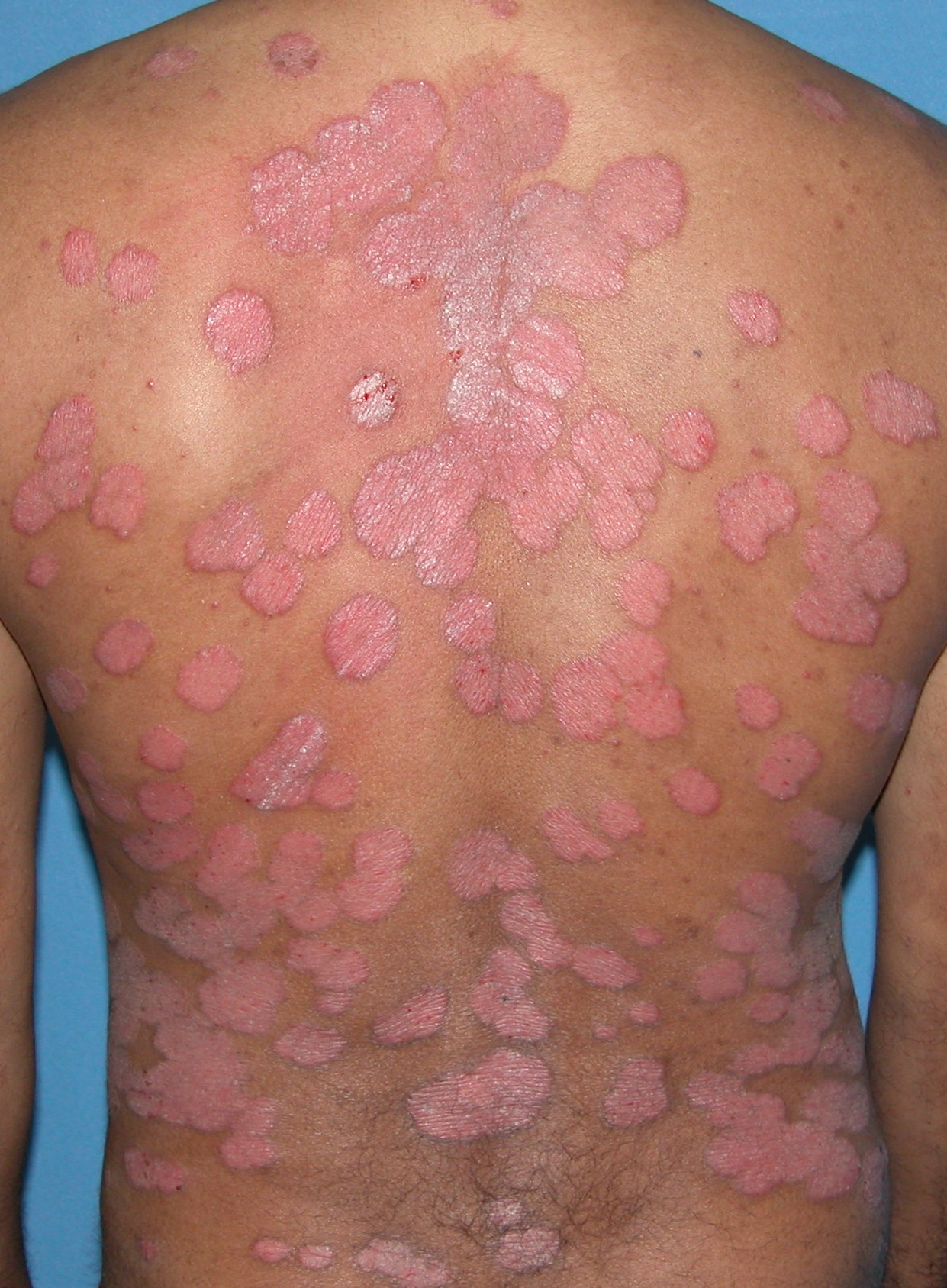What is Psoriasis
Psoriasis is a common skin disorder affecting 2% of the population. It occurs equally in men and women. Psoriasis is an immune-mediated inflammatory dermatological disorder characterized clinically by erythematous papules and plaques covered with silvery scale due to complex alterations in epidermal proliferation and differentiation. Psoriasis is a T-cell mediated hyperproliferative disorder characterized by keratinocyte proliferation, vascular endothelial proliferation and inflammatory cell infiltration. Psoriasis is a multifactorial disorder with both genetic and environmental influences.
Types of Psoriasis
There are several different types of psoriasis, all
of which have different characteristics. Someone with
psoriasis will usually only have one type of psoriasis at
any time, although when that clears it can act as a trigger
leading to another type appearing.
Plaque psoriasis
Plaque psoriasis is the most common form of psoriasis, presenting as sharply demarcated, erythematous lesion with flaky silvery-white scales most often involving the extensor surfaces knees, buttocks, elbows and scalp.
Guttate psoriasis
Small, scaly, salmon-coloured papules and plaques on the trunk and proximal extremities represent guttate "drop-like" psoriasis. It is an uncommon form of psoriasis which develops suddenly, usually after an infection (in particular a streptococcal throat infection) and affects children and young adults. It usually disappears completely, although some people do then go onto develop plaque psoriasis.Some patients may have similar presentations as pityriasis rosea, nummular dermatitis and secondary syphilis.
Inverse (flexural)
It presents as bright red, well demarcated, glazed patches in the skin folds such as the armpits, buttocks and groin. It can be extremely tender and causes extreme itching.
Mucosal involvement
Erythematous lesions or erosions on the genital or oral mucosa, including geographic tongue are the main manifestations. Incidence of mucosal involvement has been reported to be 5-6% of psoriasis patients in Kuwait.
Scalp Psoriasis
This can affect part or all of the scalp, and causes thick red patches of skin which are covered by silver-white scales like plaque psoriasis. It can cause extreme itching in some cases and hair loss in some extreme cases, although this is usually only temporary.
Nail Psoriasis
Nail changes manifest in the form of subungual debris, oil or yellow spots, onycholysis, longitudinal striations, with nail pitting being the most frequent manifestation. Nail changes predominantly pitting and longitudinal striations may also be seen among psoriatic arthritis patients. Observing nail changes can serve as valuable clue in establishing diagnosis in complex cases.
Erythrodermic psoriasis
This involves all or nearly all (at least 90%) of the skin's surface, with fine, flaky scales of skin which shed in sheets. There is usually pain and itching which can be severe, and the patient is normally very unwell with an increased heart rate and erratic body temperature. This is a very serious condition which requires urgent medical attention.
Pustular psoriasis
Pustular psoriasis presents as sterile non infectious pustules on erythematous base. four patterns have been described: generalized (GPP or Von Zumbusch), annular, exanthematic and localized. GPP can present with sheets of pustules on erythematous base with fever and systemic toxicity, but usually follows a benign course in children compared to adults. Pustular psoriasis needs to be differentiated from folliculitis, impetigo, viral, dermatophyte or candidal infection.
Psoriatic Arthritis
Psoriatic arthritis (PsA) is defined as chronic inflammatory arthropathy affecting the distal interphalengeal joints of hands, metatarsophalengeal joints of feet and spine in association with psoriasis. Skin lesions precede the onset of PsA by about 5-10 years in 80% of patients. Oligoarticular asymmetrical arthritis (≤ 4 joints) is the most common manifestation which can overtime progress to polyarthritis. The onset of disease seems to be earlier in females and those with early disease can have a greater body surface area involved, frequent relapses, unstable psoriasis and higher incidence of guttate psoriasis and nail involvement. Early recognition in childhood and aggressive but safe treatment in early stages to induce remission can prevent further damage and disabilities.
